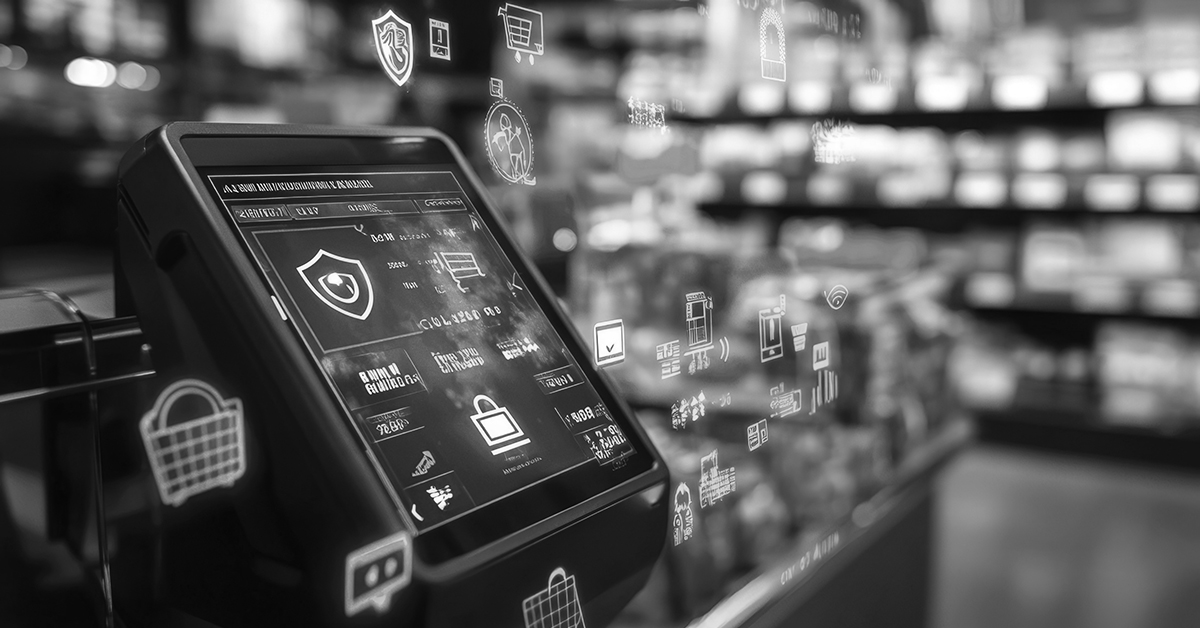Picture this: You’re at the supermarket, looking for your favorite brand of cereal. But the shelves are empty, staff are frazzled, and the checkout terminals are flickering ominously. That’s not just a supply chain hiccup, it’s a direct result of the latest wave of cyberattacks targeting the UK’s biggest grocery chains.
In 2025, major retailers like Co-op, Marks & Spencer, and Harrods found themselves at the mercy of criminals who didn’t need crowbars or ski masks; just a laptop and some cunning. Let’s unpack how these attacks happened, the tactics used, and most importantly, how any business can fortify its defenses against such digital heists.
The Anatomy of a Cyberattack on Grocery Retailers
Cybercriminals aren’t picky eaters, they’re opportunists. When targeting the grocery sector, they’re after a buffet of vulnerabilities. Let’s break down the key ingredients that made UK retailers susceptible:
First, supply chain complexity is a concerning vulnerability. Grocers depend on a vast web of suppliers, partners, and logistics systems, all connected digitally. Attackers exploit these connections, often launching supply chain attacks or ransomware by compromising a less secure vendor or logistics partner. A single compromised supplier can open the floodgates, allowing attackers to slip through interconnected systems and deploy malware that can paralyze operations.
Another critical vulnerability is the reliance on legacy systems. Many retailers are still running outdated software, often a patchwork of systems cobbled together over decades. These systems are notoriously hard to secure and easy to exploit. For example, outdated point-of-sale systems might be connected to the same network as customer databases, offering a prime opportunity to attackers who manage to breach one system and pivot to another.
Social engineering is also a powerful tactic in the cybercrime arsenal. Phishing emails, fake invoices, and phone scams target unsuspecting employees, tricking them into clicking malicious links or revealing login credentials. Once inside, attackers can navigate networks and escalate their privileges to access sensitive data, such as customer information, financial records, and even control systems that keep shelves stocked and tills ringing.
The Impact: Empty Shelves and Broken Trust
When these attacks have occurred, the consequences were immediate and severe. In some cases, entire grocery chains had to shut down operations for days, leaving shelves empty and customers frustrated. Delivery services ground to a halt, disrupting online orders and leaving homebound customers stranded without essential supplies. This wasn’t just an inconvenience. It was a blow to brand reputation and customer trust.
Financially, the impact was staggering. Ransomware demands often ran into the millions, and even if companies refused to pay, the cost of restoring systems, investigating the extent of the breach, and tightening defenses was immense. Insurers are becoming wary too, with some refusing to cover ransomware payouts or drastically raising premiums, making the financial burden even heavier.
Perhaps the most lasting impact is the erosion of trust. Customers expect their personal data to be protected, and seeing their favorite grocery brand splashed across headlines for a data breach can shatter confidence. This erosion of trust can take years to rebuild, if it’s even possible at all.
The result is everyone being reasonably upset. No one wants their data stolen, companies are still looking at cybersecurity as a cost center, rather than a loss prevention measure.
The Human Element: A Cybercriminal’s Favorite Ingredient
Behind every successful cyberattack is a human touch; an employee who clicked a malicious link, used the same password across multiple platforms, or didn’t question that suspicious email. The human factor is often the most vulnerable factor in any cybersecurity defense, and attackers know it. They invest time and resources in crafting sophisticated social engineering tactics designed to trick, deceive, and manipulate.
Phishing remains the most common entry point. Cybercriminals use carefully crafted emails that resemble legitimate invoices, urgent supply chain messages, or even messages from human resource departments. These emails often contain malicious attachments or links that, once clicked, introduces ransomware or malware.
Training and awareness are essential. Organizations must foster a culture where employees feel comfortable reporting suspicious activity, questioning unusual requests, and understanding that cybersecurity is everyone’s responsibility. Regular simulated phishing exercises, engaging training sessions, and clear communication channels can turn the human element from a vulnerability into a line of defense.
Lessons Learned: Strengthening the Digital Pantry
So, what can businesses—retail or otherwise—learn from these cyber onslaughts? It’s clear that cybersecurity can no longer be treated as a back-office concern. It must be woven into the fabric of every business process, from supply chain management to customer service.
Organizations need to scrutinize their supply chain security. Vendors must be vetted for robust cybersecurity practices, ensuring third-party partners adhere to strict protocols, and limiting the digital footprint attackers can exploit. A weak link anywhere can compromise the entire chain.
Updating legacy systems is non-negotiable. This doesn’t mean throwing out every old piece of hardware overnight but developing a strategic plan to replace or isolate outdated systems that can’t be properly secured. Segmentation is key here—isolating critical systems from less secure networks makes it harder for attackers to move laterally if they do get in.
Employee training is another crucial defense. Cybercriminals love exploiting human error, so organizations must invest in continuous security awareness training. Employees should be empowered to recognize phishing attempts, report suspicious activity, and understand their role in keeping systems secure.
Incident response readiness is the final piece of the puzzle. A well-practiced response plan can mean the difference between a minor disruption and a full-blown crisis. This includes clear communication protocols, technical playbooks, and a crisis management team ready to swing into action at the first sign of trouble.
Conclusion
Cybercriminals are here to stay, but that doesn’t mean businesses are powerless. The grocery sector’s struggles serve as a wake-up call for all industries to step up their digital hygiene and resilience. By understanding the tactics attackers use and learning from these high-profile breaches, organizations can turn their cybersecurity aisle from a point of vulnerability into a fortress of resilience. The time to fortify is now—before the next wave of attackers fills their carts with your vulnerabilities.
About the Author:

Sam Bocetta is a freelance journalist specializing in U.S. diplomacy and national security with an emphasis on technology trends in cyberwarfare, cyberdefense and cryptography.
Editor’s Note: The opinions expressed in this and other guest author articles are solely those of the contributor and do not necessarily reflect those of Fortra.

